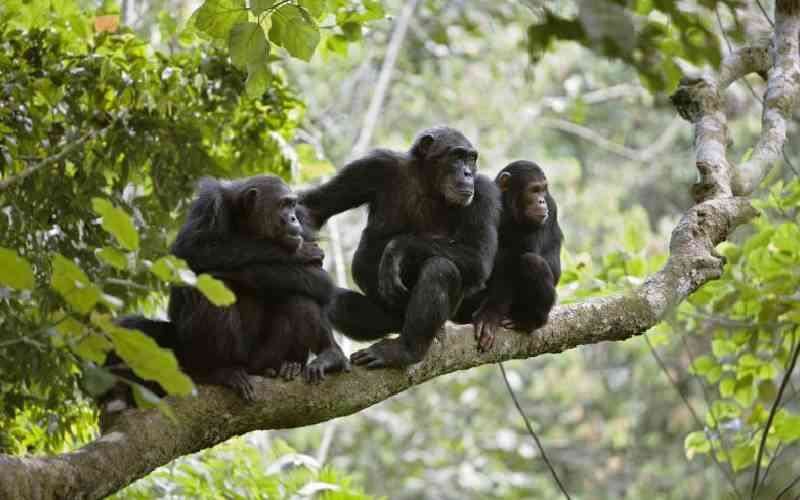
She combines her scientific expertise with cultural insights to tackle the pressing issue of East Coast Fever disease among the Maasai in Narok County. Utilizing culturally sensitive methods, she shares strategies for managing ECF with the communities.
Ann Wambui Muthiru grew up immersed in science, always knowing her path would eventually lead her to a laboratory—or somewhere closely connected.
Her research scientist parents would tag her along as they went to work on their projects, from whom she was exposed to technical matters at a very early age.
“Being in a lab was so intriguing. I would see the microscopes and other equipment, and I knew that was what I wanted to do. I never knew exactly what I wanted to pursue but felt it would have something to do with a lab,” she says.
Little did she know that she was encrusting her footstep in the world of science, one-day taking pride in being called a cultural broker. Despite her early fascination with laboratory work, Muthiru's journey took an unexpected turn when she became deeply involved in fieldwork as a PhD Fellow at the University of Nairobi, under the Feed The Future Innovation Lab for Animal Health.
Today, she has combined her scientific expertise with cultural insights to tackle the pressing issue of East Coast Fever among the Maasai people of Narok County in Kenya. She uses culturally sensitive approaches to share with the community ways of addressing the disease.
The Maasai, a Nilotic community found in Kenya and Tanzania, are highly conservative with an iconic culture. They are also considered as Kenya’s custodians of culture, tourism and wildlife. However, they have suffered calamities occasioned by diseases, including ECF, that occasionally decimate their livestock. The community, like the rest in Kenya, is also grappling with effects of climate change that manifest through extreme weather patterns. The seismic cataclysm affecting the region has also been felt in Narok.
“I facilitate understanding and communication between different cultural groups. I ensure that interventions reflect community needs and try to bridge gaps between external agencies and communities.
This helps to avoid the pitfalls of top-down interventions and promotes sustainable, community-driven solutions that respect local knowledge and practices,” she explains.
Muthiru has been working with the Maa community in partnership with other researchers on East Coast Fever.
Her dreams of being a researcher are being actualised in a different field of study: Anthropology, where she focuses on adopting the Infection Treatment Method (ITM), an immunisation process for East Coast Fever.
Using the knowledge attained through her Bachelor of Arts in Anthropology and Masters of Arts in Gender and Development Studies from the University of Nairobi, Muthiru is trying to understand what people know about East Coast Fever and their current methods of controlling it.
She has also focused on the ownership of cows in Narok and how bringing the East Coast Fever vaccine would affect both men and women.
“Once I understand what they know and practice, I can communicate more effectively about the vaccine. I will use language and concepts that are familiar to them, building upon what they already know and understand. This makes it easier for the community to understand the importance and benefits of the vaccine, potentially increasing their willingness to use it," she says.
From her stay in Narok in the last four years, she has learned that there are three production systems. The first is the mixed farming system, where farmers can keep animals without migrating; the agro-pastoral farming system, where the farmers can grow crops but occasionally migrate; and the pastoral system, the nomadic life where farmers keep migrating in search of pasture and water.
In this community, East Coast Fever is called ‘Malaria ya Ng’ombe’ (Malaria of the cattle). “When I ask them if they know the disease, livestock keepers from specific areas say it is malaria because when they go to the hospital, they are told they have the same disease their cattle usually have, although East Coast Fever is not a zoonotic disease,” she explains.
The community often associates East Coast Fever with stagnant water and mosquitoes, similar to how they understand malaria transmission. Recognising this, the researcher uses this existing knowledge as a starting point.
According to her, the Narok community prioritises specific livestock diseases, and East Coast Fever is at the bottom of the three production systems. This means that other diseases are considered more potent depending on whether they affect a large herd of livestock or are unpredictable. If the disease is unexpected, it will be classified as severe.
“Another thing I have learned by staying with the pastoral community in Narok is that they heavily rely on information from their kinship networks and peer groups; therefore, if I use these established social structures to educate them on the need to vaccinate their cows, then the likelihood of acceptance increases,” she says.
Further, she says studies have shown that when a vaccine for East Coast Fever is introduced, livestock productivity will improve, which will translate to more milk.
“The milk belongs to the women; they sell it and use the money to join the merry-go-round to improve their households because, to them, an empowered woman can keep the family together,” she says.
Her PhD research highlights the value of traditional knowledge and practices in livestock disease control. Her study also calls for improved communication to integrate cultural and scientific knowledge and interventions to enhance livestock health.
Her study also reported that farmers had coined the local word “Oltikana”, in reference to East Coast Fever, which is mainly linked to observable signs, or the organ system affected, which is “Ntikan,” which translates as parotid lymph nodes. This revealed that ECF affected the lymph nodes of the cattle.
Muthiru also noted that extra milk produced by the healthy cattle encouraged higher incomes.
Besides academic pursuits, Muthiru also polished her animal husbandry skills.
“I learned how to milk a goat. I had some skills in chicken rearing from my childhood days when my father would tell my brothers and me to slaughter a chicken if we wanted to eat chicken. Today, I can comfortably slaughter a chicken,” she says.
When not camping, she cares for dogs and cats or watches a movie.
Muthiru is one of the ten fully sponsored PhD fellows under the Feed the Future Innovation Lab for Animal Health (AHIL) programme. This programme is being implemented in 600 households in Narok County to improve human nutrition, economic welfare, and resilience by removing constraints to cattle health and production in Kenya and the East Africa region.
Washington State University leads the AHIL consortium with Kenya-based partners, including the University of Nairobi, the International Livestock Research Institute, and scientists from the Kenya Medical Research Institute and Kenya Agricultural and Livestock Research Organization.
The five-year programme combines laboratory and field intervention studies to improve uptake of animal health interventions and measure the impact on household well-being and the nutritional status of women and children.
Muthiru's research on livestock health and community well-being has the potential to have a positive impact on the future, which is a beacon of hope.
The Innovation Lab for Animal Health’s vision is to improve human nutrition, economic welfare, and resilience by removing cattle health and production constraints in Kenya and the East African region.





